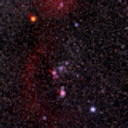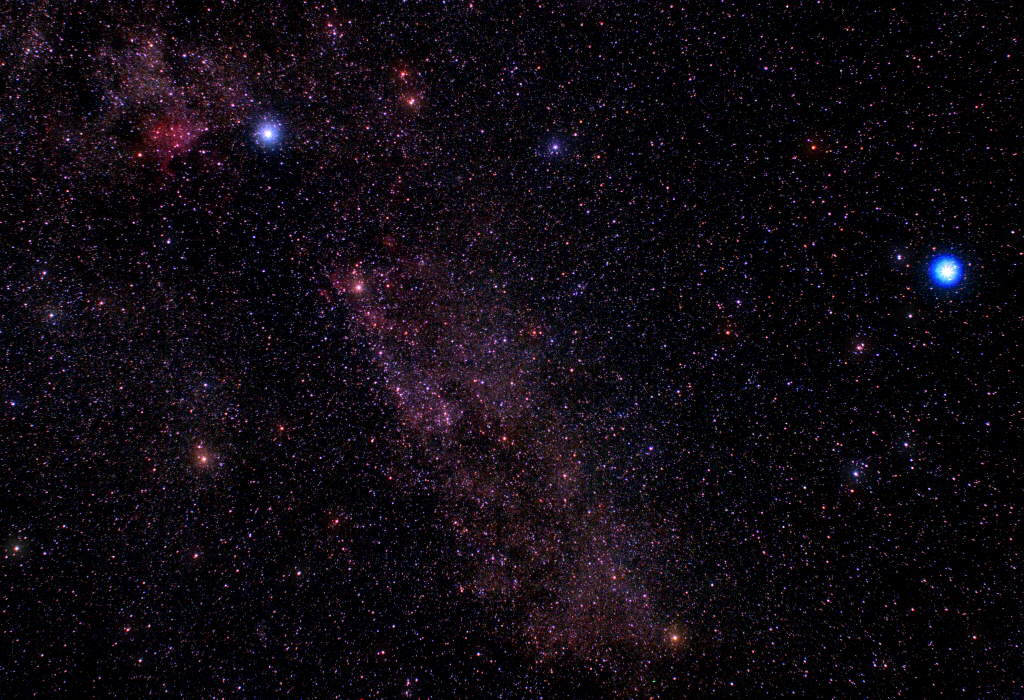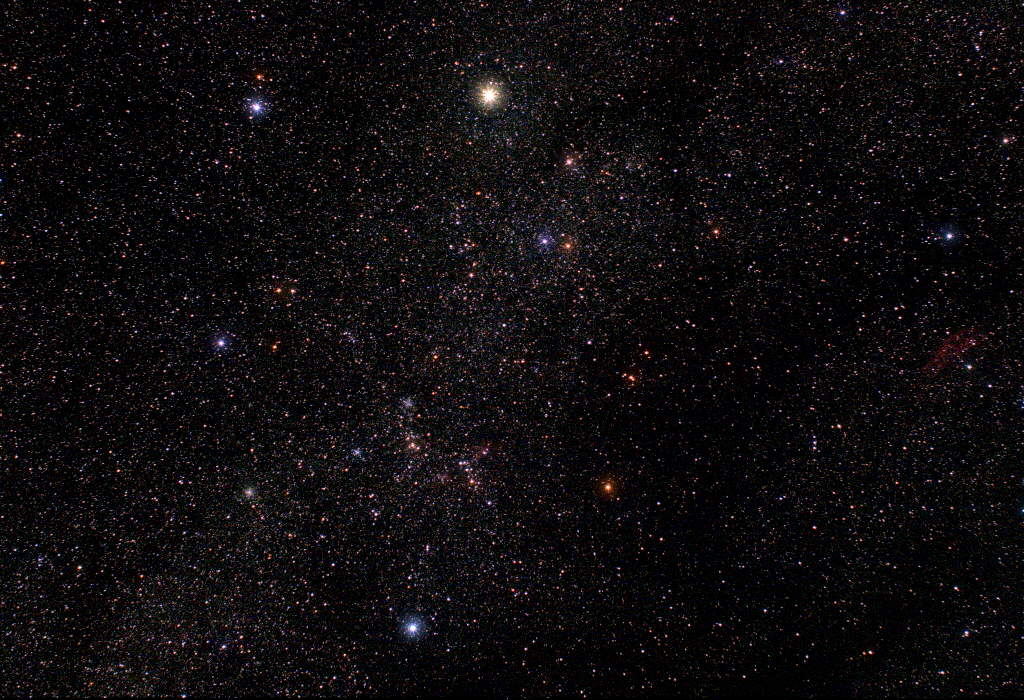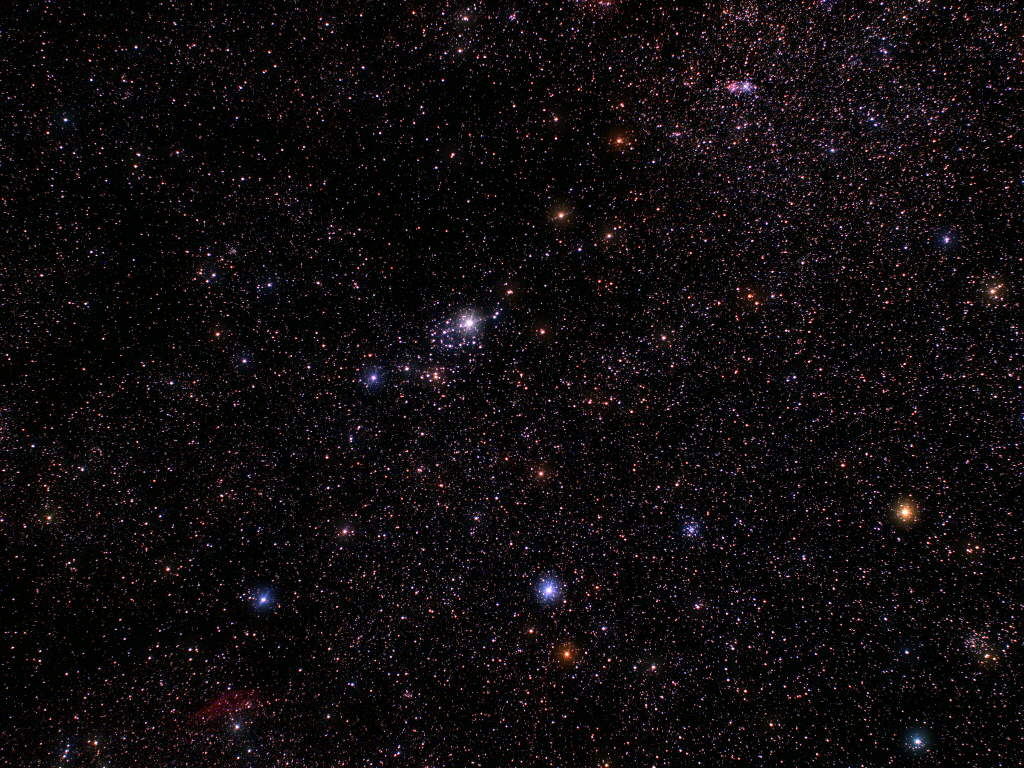
| Imaging the ConstellationsDavid Ratledge |
 |
IntroductionAnyone who has read Sky & Telescope magazine in the last 5 years cannot help but have been impressed with the quality of the constellation photographs used. These have almost exclusively been the work of the Japanese astro-photographer Akira Fujii. The feature of his photographs are the emphasised bight stars, with coloured halos, in combination with faint stars that are still sharp. His work is so good it is now marketed by David Malin at the Anglo Australian Telescope. The actual process he uses (probably a diffusion filter) has not been revealed but with digital processing we can now easily emulate these effects.
|
 |
| Andromeda before the Akira Fujii effect: With so many stars recorded, a sharp image makes identifying the constellation difficult |
|
| Andromeda after the Akira Fujii effect: The constellation is now easily identified. A feature of this process is that the colours of the stars are emphasised |
Taking the Pictures The Akira Fuji effect as alluded to above probably uses a diffusion filter at the time of taking and perhaps even utilises a period with the filter on and a period without. This would explain why the faint stars are not blurred out. Rather than trying to determine which filter and how best to use it, it is far simpler to do the same with digital processing. Some form of tracking device is needed for us to take the raw constellation images. Mounting the camera piggy-back on a telescope is one option. However, I use a very portable camera tracker which is a simple unguided motor drive (below left). This is good enough for exposures of up to 5 minutes with a 28mm lens. I generally use 4 minute exposures. Surprisingly it can be very difficult to point the camera so I have now mounted a red-dot finder on top of the camera's hot shoe (below right).
|

Pre-processing I have found that shooting raws is best. In addition I take a full set of darks, offsets and flats. IRIS handles the pre-processing. To register the images I use 2 stars - usually one top-left and one bottom-right. With shooting raws, colour balancing is required and usually the sky needs reducing down to black.
|
 |
| Cygnus |
Processing The selective blurring works on the bright stars but does not blur the faint ones. Such a technique is possible with Photoshop but requires a series of actions. What is needed is a simple single command. Fortunately the software IRIS provides just that.
|
 |
| Auriga |
IRIS Software IRIS is freeware written by Christian Buil and can be downloaded from his website. It does take some learning so don’t expect to be able to master it first time out. The software is so comprehensive that not all commands can be accommodated with pull down menus. Many are only available by typing them in a console window. The command we need for the Akira Fujii effect is one of these. The command in question is SBLUR which is short for selective blur. It requires 2 parameters; the first is sigma, ie the amount of blurring, and the second is gamma, the brightness of the stars on which it acts. The easiest way to find out which parameters are best is by trial and error. Try SLBUR 10 5 or perhaps SBLUR 6 4. |
 |
| Orion - with just the hint of Barnard's Loop |
 |
| Gemini |
|
Cameras and Lenses The images shown here have been taken with a Canon 20Da and a 28 mm f/2.8EF lens. They are generally 5 x 4mins at f/8. If you have a filter-modified camera then although you will be able to image diffuse nebula you will be subjecting your cmaera lens to light in the deep red for which it was probably never designed. Canon recommend their 24mm L series lens for astrophotography and they advise stopping it down to f/4. For the much cheaper 28mm f/2.8 lens I have found stopping it down to f/8 gives good results as can be seen here. Forget trying to shoot with the lens wide open if you have a filter-modded camera. I usually shoot at leat six exposures but invariably one or two are lost to aeroplane trails. One thing I always do is keep north vertical – there is nothing more annoying (to me) than constellations at all angles!
|
 |
| Perseus |
